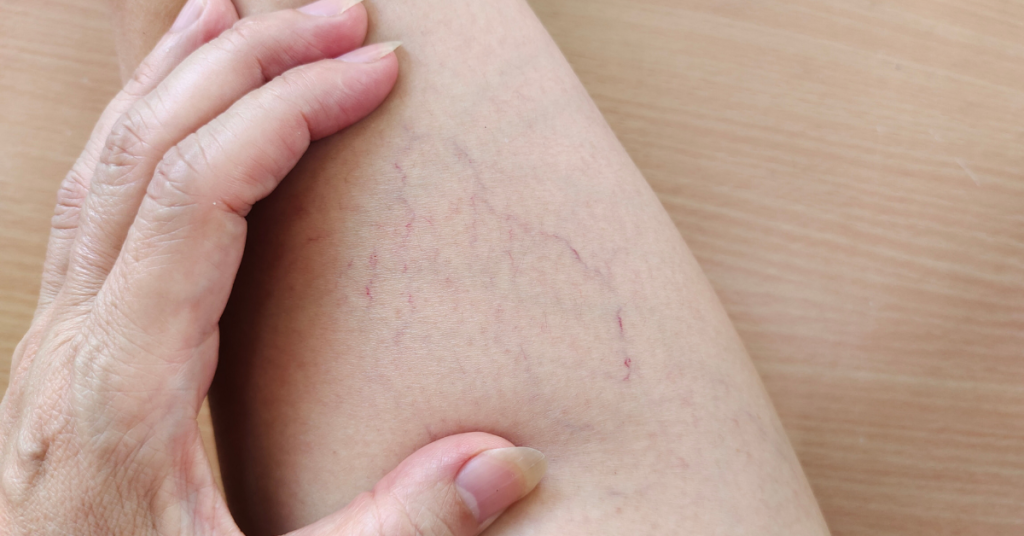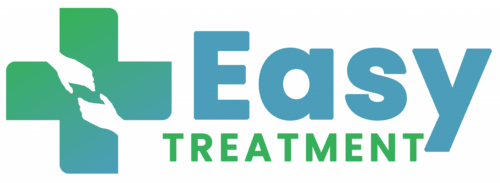If you’ve noticed delicate, web-like veins appearing on your legs or face, you’re likely dealing with capillary varicose veins—often called spider veins. While these tiny, visible veins might seem harmless, they can sometimes hint at underlying vascular issues. At Easy Treatment, we’re here to demystify this condition, explore its causes, and guide you toward solutions that work. Let’s dive into what you need to know.
What Are Capillary Varicose Veins?
Capillary varicose veins are small, twisted blood vessels that appear close to the skin’s surface. Unlike larger varicose veins, which bulge and may cause pain, spider veins are thinner and often form patterns resembling tree branches or spiderwebs. They’re most common on the legs, thighs, ankles, and face, appearing in shades of red, blue, or purple.
While many dismiss them as purely cosmetic, these veins can occasionally cause itching, mild discomfort, or a feeling of heaviness. Ignoring them might lead to complications over time, especially if they’re linked to poor circulation or deeper vein problems.

What Are Capillary Veins?
To understand capillary varicose veins, let’s start with the basics. Capillary veins are the body’s smallest blood vessels, acting as bridges between arteries and veins. Their job is to deliver oxygen and nutrients to tissues while removing waste products. When these delicate vessels weaken or sustain damage, they can dilate and become visible—forming spider veins.
Think of healthy capillaries as smooth highways for blood flow. When they’re damaged, traffic jams occur, causing blood to pool and veins to swell. This dysfunction is what creates those noticeable patterns under your skin.
Causes of Capillary Varicose Veins
Several factors contribute to the development of capillary varicose veins. Here’s a closer look:
Sun Exposure
UV rays break down collagen in the skin, weakening capillaries on the face. This explains why fair-skinned individuals often develop facial spider veins.
Genetics
If your family has a history of spider or varicose veins, your risk increases. Weak vein walls or faulty valves can be inherited, making it harder for blood to flow upward against gravity.
Hormonal Shifts
Hormones like estrogen and progesterone relax vein walls. Life stages such as pregnancy, menopause, or puberty—or medications like birth control pills—can trigger vein dilation.
Lifestyle Habits
Jobs requiring long hours of sitting or standing (e.g., office work, nursing) strain leg veins. Similarly, a sedentary routine or lack of exercise weakens circulation over time.
Aging
As we age, veins lose elasticity, and valves that prevent blood backflow wear down. This makes capillaries more prone to damage.
Weight Gain
Excess weight increases pressure on veins, particularly in the legs. This added stress can lead to spider veins or worsen existing ones.
Sun Exposure
UV rays break down collagen in the skin, weakening capillaries on the face. This explains why fair-skinned individuals often develop facial spider veins.
Risks of Untreated Capillary Varicose Veins
While most capillary varicose veins are harmless, they can sometimes signal deeper issues:
- Chronic Venous Insufficiency (CVI):
When veins struggle to return blood to the heart, it can cause swelling, skin changes, and leg ulcers. Spider veins might be an early warning sign. - Discomfort:
Some people report burning, throbbing, or cramping in affected areas, especially after standing all day. - Skin Complications:
Over time, pooled blood can lead to discoloration, inflammation, or even open sores in severe cases. - Blood Clots:
Though rare, spider veins near deeper veins could indicate clotting (deep vein thrombosis), requiring urgent care.
If you experience pain, sudden swelling, or skin changes, consult a specialist. At Easy Treatment, our team assesses your vein health to rule out serious conditions.

Capillary Varicose Veins Treatment: Modern Solutions
The good news? Capillary varicose veins treatment has come a long way. Here are proven options to restore your skin’s appearance and comfort:
- Sclerotherapy
A gold-standard treatment, sclerotherapy involves injecting a solution into the vein to collapse it. Over weeks, the vein fades as the body absorbs it. Quick, minimally invasive, and effective for most patients. - Laser Therapy
Perfect for facial veins or smaller clusters, lasers target hemoglobin in the blood, heating and sealing the vein without needles. Multiple sessions may be needed, but recovery is instant. - Radiofrequency Ablation (RFA)
Using heat energy, RFA closes off problem veins. It’s often used for larger veins but can address stubborn spider veins in certain cases. - Compression Stockings
These specially designed stockings improve circulation, reduce swelling, and prevent new veins from forming. Ideal for those with desk jobs or mild symptoms. - Lifestyle Tweaks
Small changes make a big difference:- Move regularly: Take short walks or stretch every 30 minutes if you sit/stand all day.
- Elevate your legs: Prop them up above heart level for 15 minutes daily to boost circulation.
- Stay sun-safe: Apply SPF 30+ to protect facial capillaries.
At Easy Treatment, we tailor these options to your needs. Our experts explain each step, ensuring you feel confident in your care plan.
Preventing Capillary Varicose Veins
Prevention is simpler than you think. Adopt these habits to keep your veins healthy:
Exercise daily: Walking, cycling, or yoga strengthens calf muscles, which act as pumps for leg veins.
Maintain a healthy weight: Shedding even 5-10 pounds reduces vein pressure.
Eat vein-friendly foods: Focus on fiber (prevents constipation), antioxidants (berries, leafy greens), and low-salt meals (reduces swelling).
Avoid tight clothing: Skip skinny jeans or belts that restrict blood flow.
Why Choose Easy Treatment?
At Easy Treatment, we blend expertise with empathy. Here’s why patients trust us:
Transparent Process: We explain costs, recovery, and results upfront—no surprises.
Advanced Technology: From painless lasers to ultrasound-guided procedures, we use the latest tools.
Personalized Care: No two patients are alike. We design plans based on your lifestyle, goals, and medical history.
Capillary varicose veins might start as a cosmetic concern, but addressing them early can improve your comfort and long-term health. Whether you opt for sclerotherapy, lifestyle changes, or preventive care, Easy Treatment is here to support you.
Ready to take the next step? Visit Easy Treatment India to explore our services or ask our specialists your questions. Let’s work together for healthier, happier veins!

